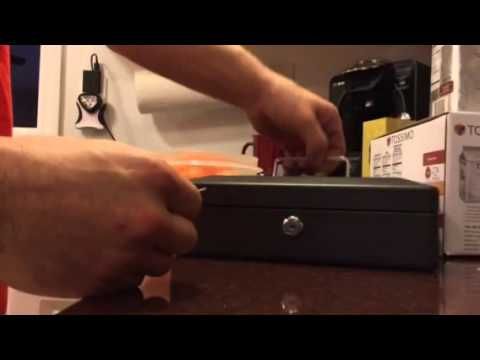How to Pick a Safe Lock
Ever wondered about the secrets behind opening a safe lock? Whether you're intrigued by the challenge or need to access a locked safe you own, understanding how to pick a safe lock can be both fascinating and practical. However, it’s crucial to approach this skill with responsibility and legality in mind. Lock picking should always be performed on safes that you own or have explicit permission to open. Ready to dive into the world of safe locks and uncover their mysteries? Let’s get started!
Read more about How to pick wafer locks!
Understanding Safe Locks
Types of Safe Locks
- Mechanical Combination Locks: These classic locks use a rotating dial to input a combination. They rely on a series of internal wheels and a spindle to align the lock's tumblers correctly.
- Electronic Keypad Locks: Common in modern safes, these locks require a numerical code entered via a keypad. They often feature additional security measures like time delays or alarms.
- Biometric Locks:These high-tech locks use fingerprint or retinal scans for access, providing an advanced level of security based on unique biological traits.
How Safe Locks Work
- Mechanical Combination Locks: Turning the dial moves a spindle connected to a series of wheels inside the lock. Aligning these wheels at the correct combination allows the lock bolt to retract.
- Electronic Keypad Locks: Entering the correct code sends an electrical signal to release the lock mechanism. These locks often include fail-safes and battery backup systems.
- Biometric Locks: Scanning a fingerprint or retina verifies the user's identity against stored data. A match triggers the lock to open, providing quick and secure access.

Step-by-Step Guide to Picking a Mechanical Combination Safe Lock
Step 1: Gather Your Tools
- Manipulation Tool: A specialized tool for feeling the internal components of the lock.
- Tension Wrench: Used to apply rotational pressure on the lock.
Step 2: Insert the Manipulation Tool
- Place the manipulation tool into the dial area, ensuring it can move freely and interact with the lock's internal wheels.
Step 3: Dial the Combination
- Start turning the dial slowly to feel for the contact points of the wheels.
- Note the points where resistance is felt, indicating a potential alignment of the wheels.
Step 4: Apply Tension
- Insert the tension wrench into the lock and apply gentle, consistent pressure in the direction the lock would turn to open.
- This tension will help you feel when the wheels and tumblers are correctly aligned.
Step 5: Identify the Contact Points
- As you turn the dial, carefully feel for slight clicks or resistance changes at specific numbers.
- These indicate the contact points where the wheels are aligning with the lock’s opening mechanism.
Step 6: Align the Wheels
- Continue turning the dial and noting the contact points until all the wheels are aligned correctly.
- This may require multiple passes to get the precise combination.
Step 7: Turn the Lock
- Once all the wheels are aligned and the correct combination is identified, apply a slightly greater amount of tension with the wrench.
- Turn the dial in the direction that opens the lock, feeling for the final alignment.
Step 8: Open the Safe
- With the correct combination dialed and the wheels aligned, the lock should release, allowing you to open the safe.
- Gently pull the handle or door to access the contents.
Step 9: Troubleshoot Common Issues
- If the lock does not open, recheck your tension and the contact points.
- Ensure the manipulation tool is correctly interacting with the internal wheels.
- Make minor adjustments to the dial and tension wrench as needed, and try again.
Conclusion
Picking a mechanical combination safe lock can seem daunting, but with the right tools, techniques, and patience, it becomes an achievable skill. By understanding the inner workings of these locks and carefully following each step, you can successfully open a locked safe. Remember, this skill should be used responsibly and legally, only on safes that you own or have explicit permission to access. Practice is key to becoming proficient, so take your time to master each step. With dedication and careful practice, you’ll soon find yourself adept at unlocking the mysteries of mechanical combination safe locks. Happy picking!
Call Us Any Time!






